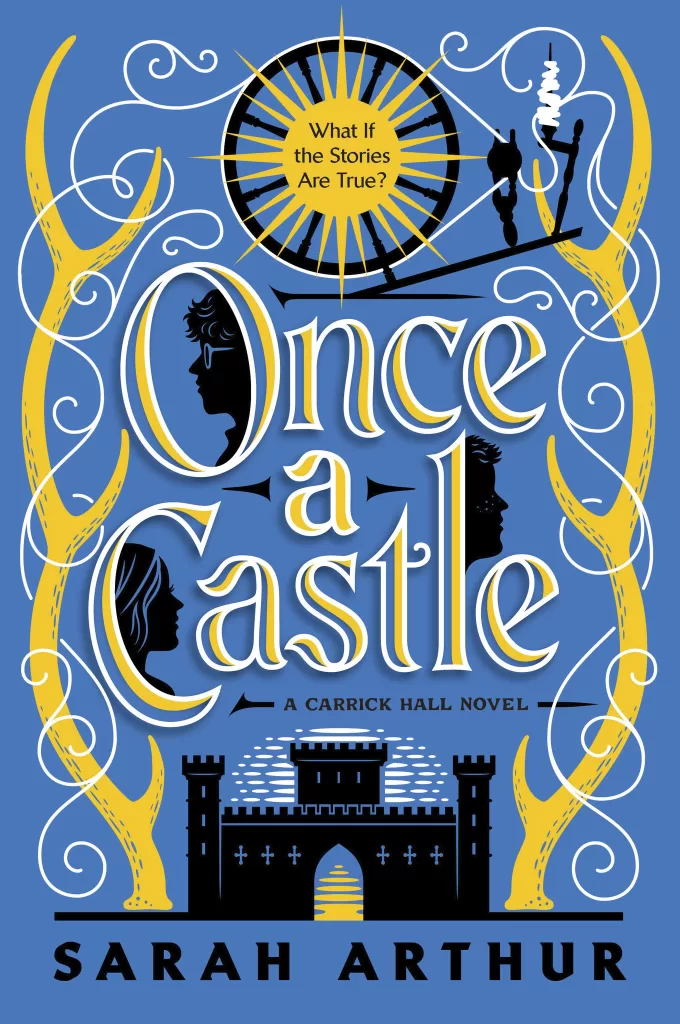Hey, everybody! Welcome back to Tumnus’ Bookshelf, where we review any and all books written by, about, and inspired by CS Lewis, The Land of Narnia, and The Inklings. For today’s review, we will be looking at Sarah Arthur’s novel Once a Castle, the second novel in her Carrick Hall series.
Title: Once a Castle ( Carrick Hall Series)
Author: Sarah Arthur
Publisher: Waterbrook ( 2025)
ISBN-1o:0593194489
Summary:
The younger siblings of Frankie Addison discover that the rift between the worlds at Carrick Hall has opened once again, and where that rift lies, magic, mystery and even some mayhem abound. Mindra, an evils sorceress bent on revenge and domination from Ternival, seeks to take the throne for herself, and vows revenge on the line of the Children of Tellus. Meanwhile a strange young woman named Zahra enters their world from Ternival escaping the wrath of Mindra, and discovers a strange world of her own. Joined by friends old and new, like the Heapworth siblings and Arash Tabari, the intrepid children seek to uncover family secrets and save both worlds.
Review:
Perhaps Tolkien said it best when Frodo remarks to Sam that the great tales never really end, the people in them may come and go, but the stories go on. It’s often a sad moment, whether it was the death of Thorin, Fili and Kili in The Hobbit, or Bilbo leaving The Shire in Fellowship of the Ring, or Aslan telling the Pevensies that they had learned all they needed during their time in Narnia. While these were bittersweet moments, think of the richness that was added to these respective worlds as we met new friends like Frodo, Samwise, Aragorn and Legolas in The Lord of the Rings or Eustace, Jill, Caspian, Puddleglum, and Reepicheep in rest of The Chronicles of Narnia. So too is it with the second book in Sarah Arthur’s Carrick Hall series.
Several years have passed since Once a Queen, Eva is older, wiser and her experience has made her better and helped heal the wounds between her, her mother, and grandmother. Frankie has grown as an artist, working on illustrating new tales of Ternival. But the door between the two worlds is still open, and that means even if they may not be able to embark on it, when adventure calls, new heroes must rise to the challenge to embark on their own story.
The Addison family returns in this adventure, and this time the narrative focuses on the adventures of Frankie’s younger siblings Tilly, Jack, Elspeth and Georgie and their best friend, Charels and Aurora Heapworth. Frankie Addison and Eva Joyce have more of a cameo role this time around, allowing for the rest of the characters to grow, and have a well-deserved time in the limelight. We also learn more about Paxton and Mrs. Feelston and even discover how maybe the Pevensie parents found their way into Narnia, despite having never been there themselves.
As a nice refreshing twist, Arthur actually treats her readers to a relationship upgrade. We learn that in the years since Eva had been in England visiting her grandmother, she and Frankie Addison are officially boyfriend and girlfriend. Perhaps after Calvin O’Keefe and Meg Murry in Madeline L’Engle’s Time Quintet books, and Taran and Eilonwy in Lloyd Alexander’s Black Cauldron I haven’t been this delighted to see the relationship between hero and heroine progress. We follow these young people on these incredible journeys that transform their lives, and thus it is only natural to want to see them together. What they experienced is something so profound, so life changing, and yet at the same time these travels to another world are something they can’t talk about with anyone else. It’s the sort of thing that can only galvanize a relationship in away few other life experiences could. One only needed to look at the bumper crop of fan fictions that explore what if Digory and Polly from The Magician’s Nephew had gotten married or what if Eustace and Jill from The Silver Chair ended up together to see just how invested readers became in those relationships. Meeting someone and falling in love is an integral part of growing up, and to follow Frankie and Eva in that stage feels like an essential step in their journey towards adulthood.
However, this time around they are the ones in need of saving. As the story unfolds, we discover that there is far more to Eva then just having a grandmother who traveled to another word. Here, Arthur asks us to imagine if, as her equivalent of Susan Pevensie’s story continued and she went on to have children and grandchildren. This makes her the target of the story’s villain. the wicked enchantress Mindra. For fans of fantasy, it is impossible not to appreciate how much like how Lewis drew inspiration from previous literary sources to craft Jadis such as the legend of Lilith or Andersen’s the Snow Queen, here too, Arthur draws from the deep wellspring of ancient myths, legends and fables to craft her villain. While citing the story of Jack the Giant Killer as her inspiration, Mindra appears cut from the same literary cloth as another great evil literary enchantress, namely Circe from Homer’s The Odyssey right down to capturing and enslaving people by turning them into animals.
With the world properly introduced in Once a Queen, and the barrier between that world and ours now opened we not only see characters from that other world travel to ours, but no longer are the stories of Ternival simply isolated as “just stories”. Those stories have a real, breathing history running concurrent with our world, in the same way Narnia’s history ran alongside that of early 20th century England. Further, Arthur understands what made Narnia and Middle-earth so compelling. Imagine if you will that all we had of Middle-Earth was the idyllic Shire, without any of the comforting tranquility of Rivendell, The mystery of Lothlorien, the vast scale of the Lonely Mountains, the depth of Erebor or Kazad-Dum, the rugged terrain of Rohan, the majesty of Gondor or the darkness of Mordor. Imagine if Narnia was just Narnia without the Lone Isles, Archenland, Telmarine, Calorman, the lands traversed by Caspian or the Underworld? The Shire and Narnia could not be sustained just by one kingdom, and thus it is by diving deeper into these worlds that the richness of the tapestry of these worlds is discovered and they have height, depth, and meaning. We visit these worlds because they appear to exist and so too is it with Arthur’s Ternival.
To this end we not only encounter more enchanted fantasy creatures, but were also introduced to a brand new Ternivalian heroine Zahra who is desperate to free her family and friends from Mindra. Her story runs concurrent with a new friend of the Joyce family, Arash Abari and his family. Arthur draws heavily from the characters of Aravis and Emeth and Narnia while wrestling with a lingering specter of Lewis’ works. Further, Arash’s own grandfather has a key role to play in sharing more of the stories of Ternival.
However, while Once a Queen relied on a first-person narrative and as a result, we were reading the stories along with Eva and Frankie, these new stories are treated more akin to an appendix. They helped fill in some of the gaps in the story and answer some lingering questions I had, especially wondering just why Mindra hated the people of neighboring realms of Ternival as much as she hated the people of Ternival. I’ll confess this time I wasn’t as convinced it was a real book in the way I had been with the stories in Once a Queen. However, Arthur had already established that the in-universe fantasy books in Once a Queen were simply obscure and forgotten, whereas this time around we are treated to a series of long-lost and incomplete continuing tales, something more akin to Tolkien’s Unfinished Tales of Middle-Earth then say, The Silmarillion. Arthur already convinced me that the stories of Ternival once existed, now, by fleshing out these stories she is convincing me the stories continue.
Once a Queen was a delightful fable about three generations of women who had believed they had outgrown fairy-tales learning how to not only love, but believe in fairy tales again, Arthur’s sequel, Once a Castle takes it one step further as we follow Tilly, Jack, Elspeth and Georgie Addison, Charles and Aurora Heapworth and their friends Zahra and Aresh on a journey of their own to learn to live out those lessons and virtues learned in those stories into the “real world”, and perhaps, make a “Happily Ever After” feel just as real and possible in our world as it could in a fairy tale. While reminding us that “Evil never really dies, but just takes on a new form and needs to be challenged again and again, we are also reminded that “Happily Ever Afters” don’t just happen, they have to be earned, through hard work, sacrifice, and holding vast to virtues like honesty, bravery, trust, friendship, love, faith and hope. The young heroes and heroines of Sarah Arthur’s Once a Castle demonstrate all of that in spades. I can’t wait to return to Carrick Hall!
Five out of Five Shields
Order the book from Amazon.com

